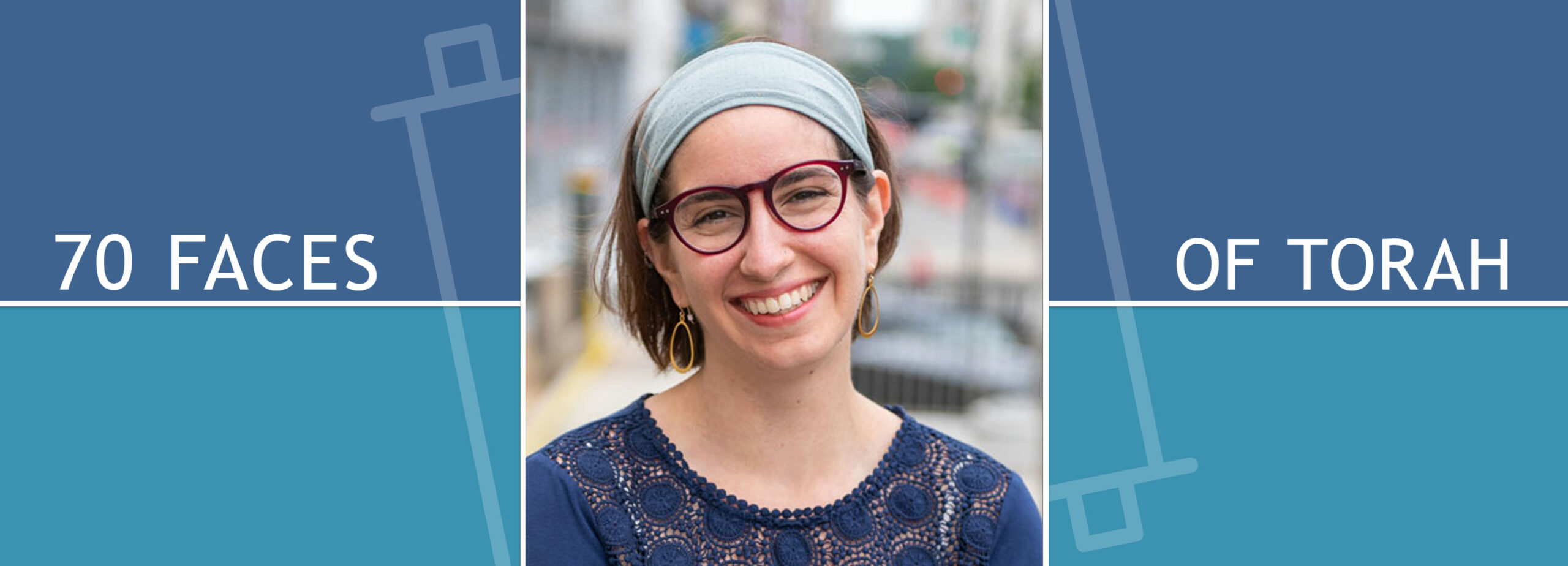Seventy Faces of Torah The Walls That Surround Us

Sukkot
I find that there are days when I don’t leave the house. And some days, before I settle into another day of working from home, of navigating another eight-hour day of my five-year-old’s virtual kindergarten, I step outside and just take a breath, surveying our urban DC street from our front door—the early morning runners, the dog walkers, the garbage trucks, as they pass by. The rest of what I know of the goings on of the outside world comes in the form of alerts on my phone and scrolled articles in stolen moments of downtime. At least, there’s that breath, a brief moment of connection with the outside world before I step back inside.
Many of us have become very good at following God’s instruction for the observance of the seventh day: “Let everyone remain where he is: let no one leave his place on the seventh day.” (Exodus 16:29) After six months of not leaving our places, living in a perpetual Shabbat where our personal tehum, our boundaries have shrunk, extending little beyond the four walls of our dwelling places, Sukkot demands something different of us. Sukkot asks us to leave our homes behind. We’re instructed in the Book of Exodus, “You shall live in sukkot seven days; all citizens in Israel shall live in sukkot.” (Exodus 23:42) We’re to leave behind the security of our homes for these temporary homes, homes that exist beyond our permanent walls, homes that are surrounded by the world, or rather exposed to the world on all sides.
After half a year of closing our doors, protecting ourselves and others behind our walls, Sukkot demands that we throw open the proverbial doors of our sukkah and invite people in to eat with us. In the Mishneh Torah, Rambam teaches that on festival holidays like Sukkot, we not only have an obligation to feed “the stranger, the orphan, and the widow,” as commanded by Deuteronomy, but “one who locks the doors of their house, eating and drinking with their children and spouse alone . . . is not participating in the joy of God’s commandments.” (Mishneh Torah Hilchot Yom Tov 6:18) To observe Sukkot, the holiday of ushpizin or invited guests, without guests, is to not truly celebrate Sukkot at all.
So how do we do this? How do we leave behind our homes during a period in which many of us have been confined to our homes for the past six months? How do we step beyond the security of our four walls in which we control the germs that come in and out into the great outdoors, a space that exists beyond our control? And, what lessons might we learn from our eight-day dwelling in sukkot, in which we simultaneously construct walls and roofs to protect us while insisting that these same boundaries must be open to the world around us?
There are all sorts of requirements for the walls with which we are to construct our sukkot. The Mishna teaches that the walls must be walls that are tall enough that we recognize them as actual walls—about 32 inches; but, in fact, not so tall that we forget that we are standing within a wall structured—no taller than 30 feet. (Mishnah Sukkah 1:1) From the Gemara, Rabbi Meir teaches us that elephants are inadvisable as walls as they might run off, leaving us short a wall, and therefore, short a structure. And from Rabbi Akiva, we learn that a sukkah must have walls that are substantial enough to withstand a typical land wind—no thank you to sheets that blow in the wind (Massekhet Sukkah 23a) All of these halakhot are coming to teach us that our sukkot, while temporary by definition, must have walls that we can rely on to remain standing—walls that will withstand the elements, that will neither run off or, God forbid, die—walls that we can count on.
And yet, our sukkot, unlike our permanent dwelling spaces, must be permeable; they must be exposed to and, in fact, constructed from the very world around them. While the walls must be reliable walls, our schach, the coverings for our roofs, must come from materials that once grew in the soil. (Mishnah Sukkah 1:4) While you can’t have your sun be more than your shade, meaning your roof can’t be too open, when one thinks of a sukkah, inevitably one thinks of a structure that is simultaneously exposed yet protected, open yet closed. (Mishnah Sukkah 2:2) If you make your sukkah too solid, too permanent, too closed to the outside world, it is no longer a sukkah. It’s no longer a fit dwelling place for the holiday.
Sukkot presents a model of home that both offers protection to those inside without closing them off to the world around them. Our sukkot are an in-between ground; when we sit in them, we are, at once, secure in our homes, while a part of the world around us.
As I write this from the security of my own home, with a sense of disconnectedness from the friends I once saw regularly, the community with which I davened, the neighbors and extended neighbors in the midst of their own crises, I wonder, “What might Sukkot teach us about the return to our permanent dwelling spaces? How might we build homes with walls that will protect us and keep us safe while still maintaining a sense of openness to the lives that continue just outside? How might we protect ourselves and others from this virus without closing ourselves off emotionally and spiritually to the needs of our community? How might we bring our sukkot with us after the holiday rather than leave them behind?”


